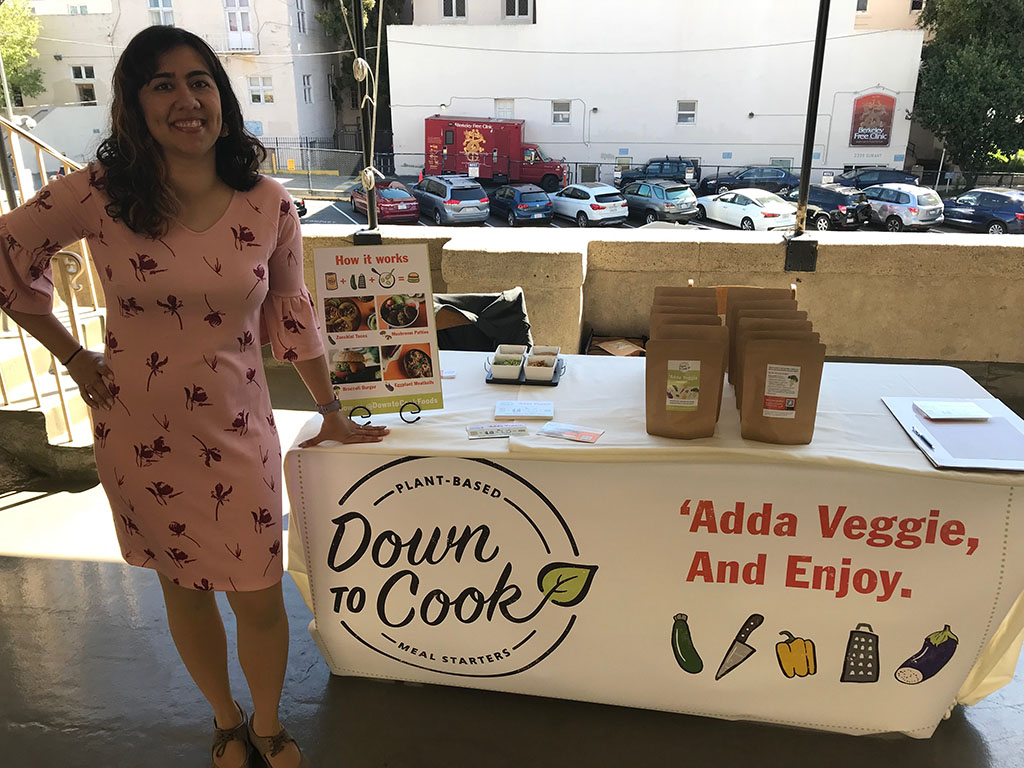Engineering the future of plant-based food
Adam Dove
Jun 13, 2019
The number of people adopting a plant-based diet is growing by the day. And the reasons for going vegetarian or vegan seem to be growing as well. Some do it to help reduce CO2 emissions—produced in large amounts by the meat and dairy industries. Others hope to increase their overall health; especially considering the World Health Organization has labeled processed meat a carcinogen. Still others do it to protest the unethical treatment of animals. But whatever the reason, there are millions of people around the world now looking for alternatives to meat.
And while plenty of processed meat alternatives already exist, thanks to her time in Carnegie Mellon’s Chemical Engineering Department, Ph.D. alumna Trishna Saigal is creating a healthier option with her plant-based food startup, Down to Cook.
As a Chemical Engineering student, Saigal came to Carnegie Mellon thinking what many young ChemE’s think: that she would enter the pharmaceutical industry. While this didn’t particularly excite her, she loved the process design inherent to chemical engineering, and for that, she would take the good with the bad. But that all changed she went to an open interview at The Clorox Company.
“I thought I would most likely be joining their cleaning department, given my complex fluids background,” Saigal says. “But as it turned out, they needed someone with my experience to work on Hidden Valley Ranch. I had specifically studied emulsions in my Ph.D., and they needed someone to lower the fat in ranch, while maintaining its creamy texture.”

Saigal advertising her plant-based meal starters at the Down to Cook table at a local farmer's market.
According to Saigal, the majority of her work on Hidden Valley Ranch involved modeling flavor as a function of texture. The fat level, the droplet size, the interaction of the fat droplets with one another—all of this affects the texture and flavor, and can be modified using chemical engineering principles. For example, two different formulations can contain the same amount of garlic powder, but if the fat content or droplet size is different you will perceive the level of garlic differently.
But her work with Hidden Valley Ranch was only the beginning of Saigal’s food science career. From there, she decided it was time to work on something that more aligned with her moral values, and thus, found a home at a small startup called Ripple Foods, which makes dairy-free alternatives to everyday products.
At Ripple, I was tasked with solving a number of problems they were having with their dairy-free products. As it turned out, my background in emulsions was perfect for this.
Trishna Saigal, CEO and Founder, Down to Cook
This experience gave Saigal a taste of what it was like to use her unique background in chemical engineering and food sciences to further a cause she was passionate about—the creation of a more plant-based world. It was with that passion in mind that she chose to leave Ripple foods and start her own company: Down to Cook.
Often, vegan and vegetarian specialty foods are cost-prohibitive, available only to higher-income populations. But Saigal wants to change the idea that a plant-based lifestyle is only for the wealthy. The idea behind her new startup is to provide delicious, plant-based options for everyone by creating blends of spices and proteins that can be mixed with affordable vegetables to form a balanced meal.
“For instance, we’ve created a paste similar to vegetable broth concentrate that when blended with a bell pepper and a sweet potato forms a perfect substitute for cheddar cheese,” Saigal says. “We have a mix you can pair with other vegetables to change the texture and protein content as a replacement for ground beef. In this way, you don’t need to buy these expensive meat and dairy replacers—you can make them yourself at home, using your own affordable ingredients.”
That’s what Saigal’s Carnegie Mellon Chemical Engineering education taught her: how to manipulate ingredients. In the same way that a chef adds spices and oils to create a better-tasting recipe, Saigal uses these same ingredients to create a better food product. But the ingredients she chooses are based on a deep knowledge of their chemical properties.
“In the world of food science, when we talk about things like emulsifiers, we aren’t talking about dangerous, unpronounceable chemicals,” she says. “In the case of ranch, it’s egg yolk. The yolk has a combination of proteins and phospholipids that stabilize the droplet. For non-dairy milks, it’s other things. Food scientists understand how these naturally occurring things function, then use that to design the process of making a food product.”
